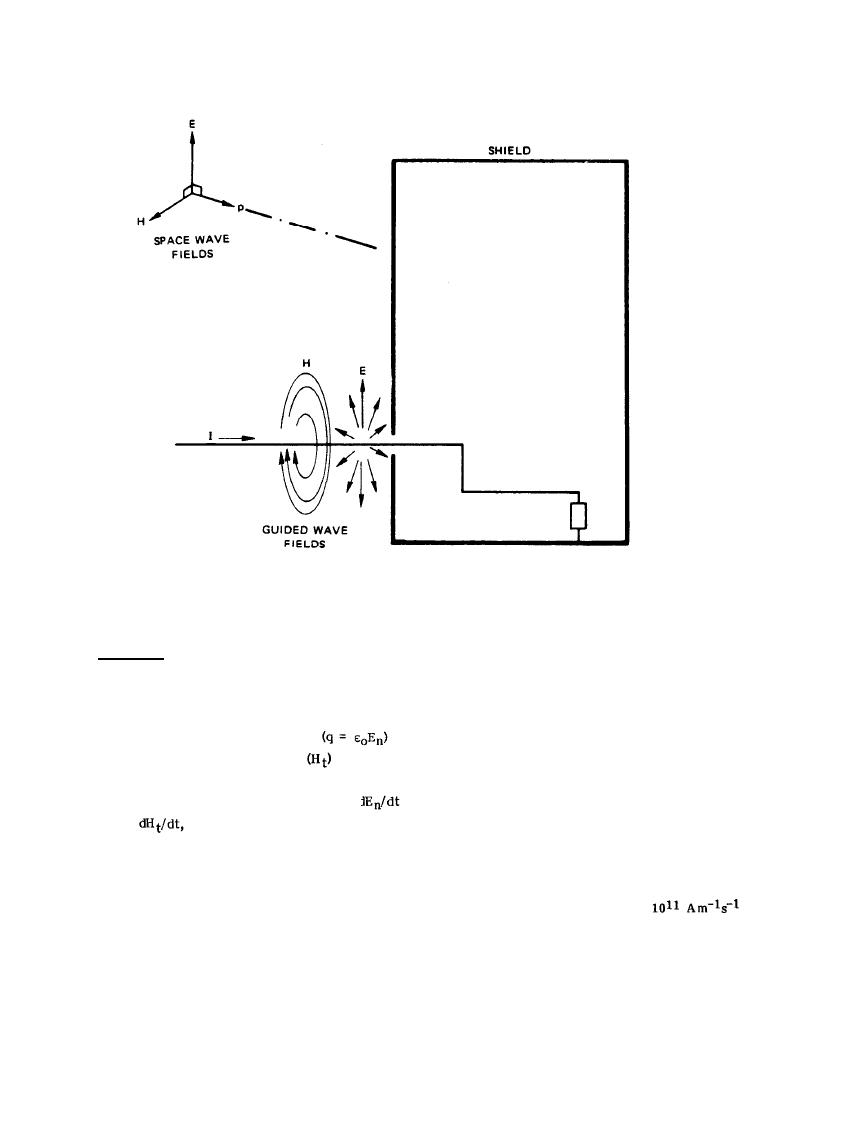

Custom Search
|
|

|
||
 MIL-HDBK-419A
Figure 10-7. Shield to Exclude Electromagnetic Fields
10.3.2.3 Apertures.
Apertures in the shield surface allow the external HEMP-induced fields to penetrate through the shield and
interact with internal wiring or other conductors, as illustrated in Figure 10-8. The external electric field (En)
associated with the surface charge density
can induce charge on internal cables as illustrated in
Figure 10-8a. The external magnetic field
which has the same magnitude as the surface current density (J)
can penetrate through the aperture to link internal circuits, as illustrated in Figure 10-8b. Since the current
induced by the electric field is proportional to
and the voltage induced by the magnetic field is
proportional to
the aperture coupling emphasizes the fast-changing parts, or high-frequency spectrum,
of the HEMP-induced transient. However, it is important to recognize that it is in the rate of rise that the
HEMP stress is dominant over the other external sources.
The maximum open-circuit voltage induced by a rate of change of external magnetic field of
penetrating a circular aperture 5 cm in radius is over 600 V. This rate of change of the field is characteristic of
the HEMP, and the analysis leading to the induced voltage is based on a wire directly across the aperture just
inside the shield.
Thus, aperture coupling is an important consideration in HEMP interaction analysis.
Apertures in facility shields take many forms; they range from open doors and windows to the discontinuities at
riveted or bolted joints in the shield.
10-11
|
 |
|
 |
||